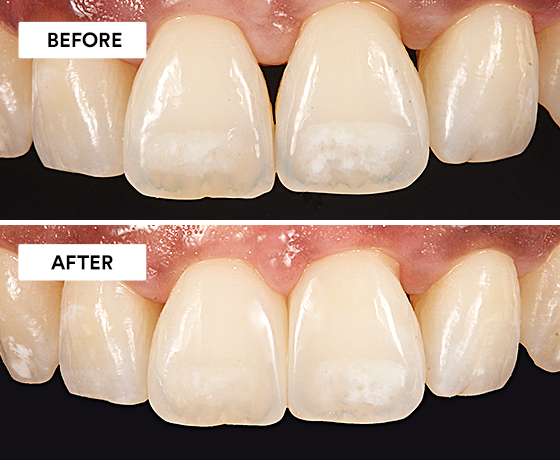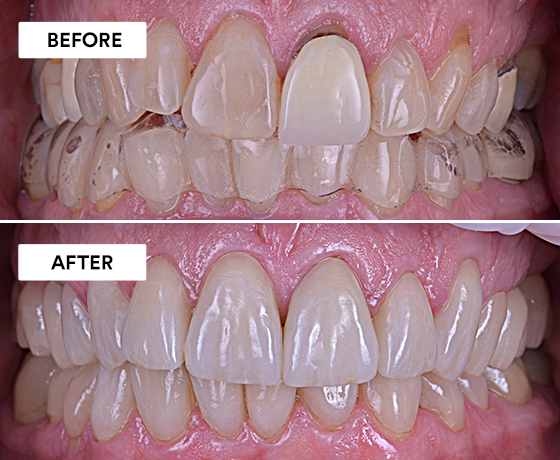Clinical Case: Black Triangle Closure Using Bioclear© BT Matrices
Using 3M™ Single Bond Universal Adhesive, 3M™ Filtek™ Supreme Flowable Restorative, 3M™ Filtek™ Universal Restorative, 3M™ Elipar™ Deep Cure-S LED…

Using 3M™ Ketac™ Universal Aplicap™ Glass Ionomer Restorative.
Wedge-shaped non-carious cervical lesions are multifactorial conditions caused by processes like erosion, attrition, abrasion and abfraction. In order to provide for successful treatment, it is essential to determine the individual etiological factors during the initial appointment. For this purpose, the patient is interviewed about dietary, tooth-brushing and possible parafunctional habits. Based on the obtained information, suitable preventive measures are taken. In addition, restorative treatment may be required. Depending on the patient’s demands, age and the individual caries risk, we opt for composite or glass ionomer restorative for this specific indication. Glass ionomer materials offer several advantages: They are easy to use, cost-effective and offer a continuously release of fluoride. In the case of a non-carious cervical lesion, another important benefit results from the fact that no separate etching of the exposed and usually sensitive dentin is required –the approach is truly minimally invasive and offers increased patient comfort. Therefore, in our dental practice, 3M™ Ketac™ Universal Aplicap™ Glass Ionomer Restorative is preferred for Class V restorations

A 45-year-old female patient with a wedge-shaped non-carious lesion on the upper right second premolar.

Verification of the size and shape of a cervical matrix to be used for simplified sculpting.

3M™ Ketac™ Universal Aplicap™ Glass Ionomer Restorative, a fluoride-releasing glass ionomer restorative, is selected for a high level of protection.

After mixing for 8 seconds in a 3M™ RotoMix™ Capsule Mixing Unit, the restorative material (shade A3) is placed directly into the cavity.

A cervical matrix is used to create a smooth surface and restoration margin, as well as reduce the effort needed for finishing and polishing.

Excess removal with a Heidemann spatula.

Finishing with 3M™ Sof-Lex™ Extra-Thin Contouring and Polishing Disc (fine grit).

Result obtained immediately after polishing.

Final result.
Refer to Instructions for Use (IFU) for complete product information. Results may vary.

Using 3M™ Single Bond Universal Adhesive, 3M™ Filtek™ Supreme Flowable Restorative, 3M™ Filtek™ Universal Restorative, 3M™ Elipar™ Deep Cure-S LED…

Using 3M™ Scotchbond™ Universal Adhesive, 3M™ Filtek™ One Bulk Fill Restorative, and the 3M™ Sof-Lex™ Spiral Finishing and Polishing system.

Using 3M™ Protemp™ 4 Temporization Material, 3M™ Scotchbond™ Universal Plus Adhesive, and 3M™ RelyX™ Universal Resin Cement.